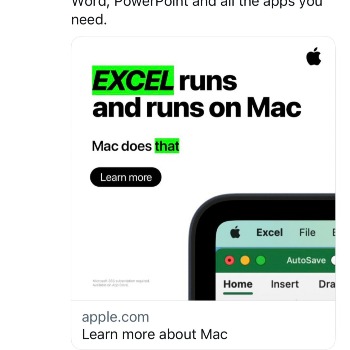Avoiding Common SEO Pitfalls to Fuel Your SEM Campaigns: A Guide to Higher Rankings and Traffic
Search Engine Optimization (SEO) and Search Engine Marketing (SEM) are the dynamic power couple of the digital world, driving website traffic and propelling brands to the top of search results. But this powerful duo can be tripped up by some surprisingly common SEO mistakes, leaving your SEM campaigns sputtering and your website buried in the depths of search queries. Don't worry, intrepid marketer! This guide will shed light on these pitfalls and equip you with the knowledge to avoid them, ensuring your SEM campaigns soar to new heights.
SEO and SEM: Working in Tandem for Traffic Triumph
Before diving into the nitty-gritty of mistakes, let's refresh our memory on the beautiful partnership between SEO and SEM:
- SEO is the organic optimization of your website, making it visible and relevant to search engines like Google. Think of it as building a sturdy bridge for search crawlers to access your content.
- SEM involves paid advertising on search engine results pages (SERPs). Imagine these as billboards on that same bridge, grabbing attention and directing users directly to your website.
When these two work together flawlessly, you've got a highway to online success. But neglecting SEO can hinder your SEM efforts, just like a crumbling bridge would block off your fancy billboard. So, let's identify the potholes and roadblocks to avoid on your digital journey.
Top 5 Common SEO Mistakes Sabotaging Your SEM Campaigns:
1. Keyword Mishap:
Keywords are the bridges between your website and user searches. Choosing the wrong ones is like building a bridge to nowhere.
- Mistake: Relying on broad, generic keywords or ignoring long-tail keywords with higher conversion rates.
- Impact: Low reach, irrelevant traffic, and wasted SEM budget on clicks that won't convert.
- Fix: Conduct thorough keyword research using tools like Google Keyword Planner or SEMrush. Target a mix of relevant, high-volume keywords and specific long-tail phrases that align with user intent.
2. Content Catastrophe:
Content is king (or queen!), and thin, irrelevant, or duplicate content is the jester throwing rotten tomatoes at your royal reign.
- Mistake: Ignoring content quality, relying on copied or spun content, or neglecting blog updates.
- Impact: Lower search engine ranking, poor user engagement, and wasted SEM budget on ads directing users to unappealing content.
- Fix: Prioritize high-quality, informative content relevant to your keywords and target audience. Build a content calendar for regular updates and avoid plagiarism.
3. Technical Tumbleweeds:
A slow, broken website is like a rickety suspension bridge – users won't trust it, and search engines won't rank it.
- Mistake: Overlooking technical SEO aspects like slow loading times, broken links, or mobile-unfriendliness.
- Impact: Frustrated users, higher bounce rates, and potential penalties from search engines.
- Fix: Invest in website speed optimization tools, regularly audit for broken links and mobile responsiveness, and prioritize user experience.
4. Backlink Blunder:
Backlinks are like votes of confidence from other websites, boosting your online reputation and credibility.
- Mistake: Buying spammy backlinks or neglecting to build organic backlinks through quality content and outreach.
- Impact: Lower search engine ranking, potential penalties for unnatural backlinks, and damaged website reputation.
- Fix: Focus on creating high-quality content that earns natural backlinks. Engage with other websites and communities relevant to your niche.
5. Measurement Myopia:
Without tracking your results, you're driving blindfolded. You won't know what's working and what's not, hindering your ability to optimize both SEO and SEM campaigns.
- Mistake: Ignoring analytics data or failing to track key metrics like website traffic, conversions, and keyword rankings.
- Impact: Ineffective allocation of resources, inability to identify problems, and missed opportunities for improvement.
- Fix: Utilize analytics tools like Google Analytics and SEM platform dashboards to monitor key metrics and adapt your strategies based on data-driven insights.
FAQs:
1. Can fixing my SEO mistakes immediately improve my SEM campaigns?
While the impact may not be immediate, addressing major SEO issues can gradually improve your SEM campaign performance by increasing organic traffic and relevance, leading to better targeting and higher conversion rates.
2. How often should I audit my website for SEO mistakes?
Regularly audit your website, at least quarterly, to identify and address potential issues. Focus on technical SEO updates, broken links, and content freshness.
3. I'm afraid I've already made some of these mistakes. What should I do?
Don't panic! The worst mistake is not fixing them. Start by prioritizing
Conclusion: Unleashing the Synergy of SEO and SEM
Mastering the art of SEO is not just about ranking higher; it's about paving the way for your SEM campaigns to soar. By avoiding the common pitfalls we've discussed, you can build a robust website foundation that attracts both organic and paid traffic, propelling your brand to the top of the digital mountain. Remember, SEO and SEM are a dynamic duo, not solo acts. Optimize your website, prioritize quality content, and track your progress like a hawk. With a clear focus on these elements, you'll transform your SEM campaigns from sputtering engines to sleek, high-performance machines, driving conversions and leaving competitors in the dust.
Call to Action: Fuel Your Digital Ascent with SEO and SEM Prowess!
Ready to unleash the full potential of your SEM campaigns? Now that you're equipped with the knowledge to avoid common SEO pitfalls, it's time to take action! Here's how you can put your learnings into practice:
- Audit your website: Run an SEO audit to identify and fix any existing technical issues, broken links, or outdated content. Tools like Google Search Console and SEMrush can be your allies in this mission.
- Refine your keyword strategy: Conduct thorough keyword research using tools like Google Keyword Planner or Ahrefs. Target a mix of high-volume keywords and relevant long-tail phrases that align with your audience's intent.
- Embrace the power of content: Create high-quality, informative content that resonates with your target audience and addresses their pain points. Remember, fresh, valuable content is the golden key that unlocks organic traffic and conversions.
- Build backlinks like bridges: Focus on attracting natural backlinks through quality content and outreach efforts. Engage with relevant communities and websites to build brand credibility and boost your ranking in the eyes of search engines.
- Measure and adapt: Don't fly blind! Regularly track your website traffic, conversions, and keyword rankings using analytics tools like Google Analytics. Use data-driven insights to optimize your SEO and SEM strategies for continuous improvement.
Don't stop here! Stay tuned to my blog for more in-depth insights on conquering the world of SEO and SEM. I'll be sharing expert tips, case studies, and actionable strategies to help you propel your website to the top of search results and leave your competitors in the dust.
Together, let's fuel your digital ascent with the power of SEO and SEM!



